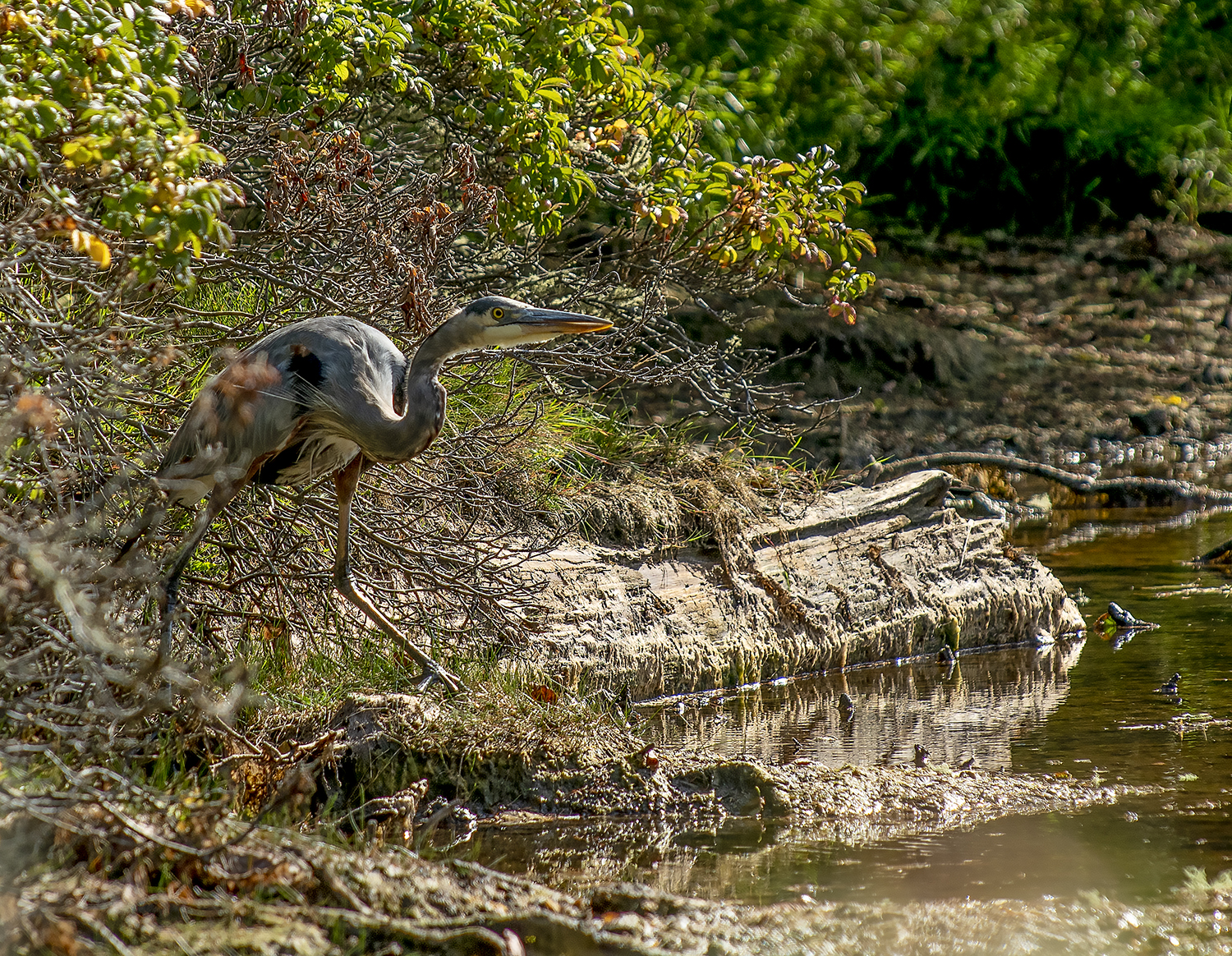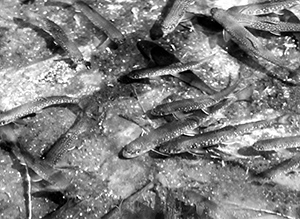
Great Blue Heron
Great Blue Heron
There is something almost pre-historic about Herons, and the Great Blue Heron in particular. We’ve been fortunate that every place we’ve lived in Nova Scotia, we’ve shared our property with Great Blue Herons. In Wallbrook, Shelburne County, we had several in our marsh, and I do remember one evening in particular where I was sitting on the edge of the marsh in a blind and a Great Blue decided that the grass next to me was a safe place to land. He was but a meter away, so close I could hear him opening and closing his bill. I moved at some point after a few minutes and he took off, insulted that he’d been so near, and he made that wonderful, prehistoric noise as he flew to the other side of the ponds.
This week, after Teddy, I went to a marshy area to see if any bird rarities and been blown in, and there on the edge of a pond was a lone Great Blue Heron watching for fish in a small back pool. I watched him for a few minutes and got the image for this week, but then something startled him and he disappeared back into the brush behind him.
Our indigenous Mi'kmaq reportedly used to eat Great Blue Herons, boiling them down. The large birds don’t weight that much, so I suspect the feathers and other parts were also used in various ways. The birds have responded well to attempts to keep marsh habitats for waterfowl, and their populations are on the upswing in most locations – except notably in southern Florida where mercury in the water is suspected of being a contributing factor to declining populations there.
The Great Blue Heron is partially migratory, so soon most, but not all, will begin heading south for the winter. I’ll miss them if they leave, as the marsh in front of our house just seems more interesting when these large, interesting birds are in residence!









































